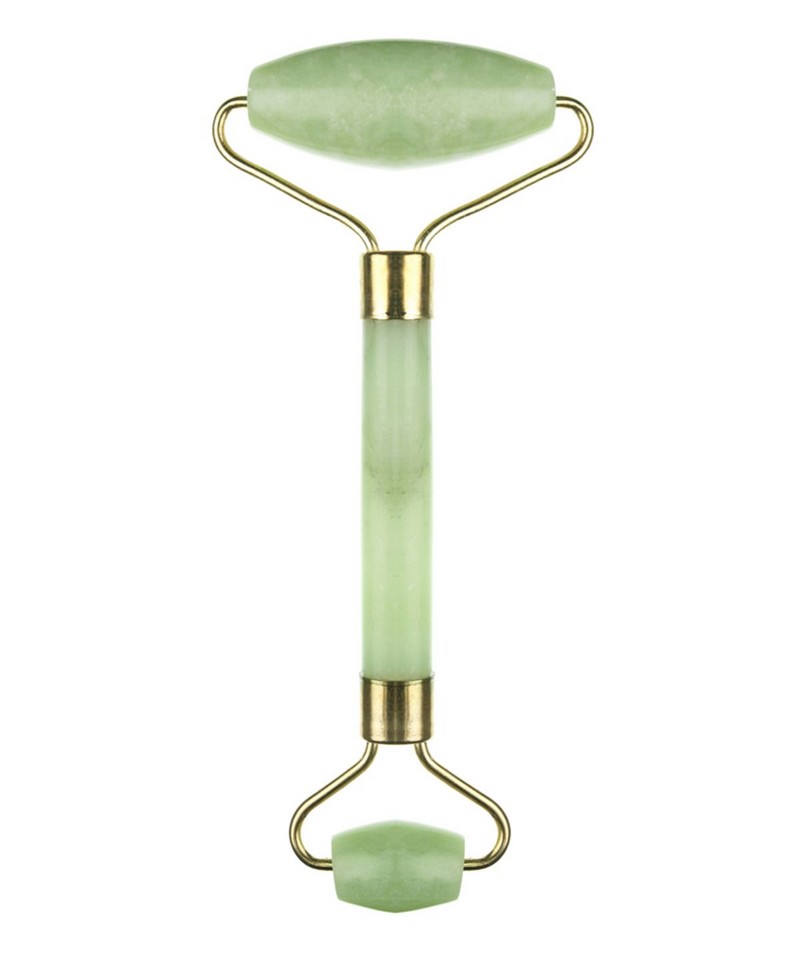
These rollers utilise ancient Chinese methodology to stimulate lymphatic drainage while massaging skin and toning underlying muscles; photo: cultbeauty
Like current-season Valentino and Balenciaga, jade rollers are green and irrefutably on trend. In Chinese medicine, this has been the case since about the seventh century, but this season, they have been borrowed and monetised by an industry elbow-deep in what is known as lo-tech wellness – AKA the alternative beauty fad of 2018. Lo-tech because they don’t need batteries and you keep them in the freezer, and alternative because you move a jade roller over your face like you might a rolling pin on pastry, which is a bit weird.
Still, there are supposedly rewards to be reaped. The benefits of massaging your face each day with one of these range from the ironclad (cold things pressed against our skin feel nice), to the possible (such pressing is supposed to have an anti-inflammatory, lymph-draining effect), to the dubious (jade is said to represent healing and wisdom and protection).
Sales are hard to track. At Cult Beauty, a gateway site to the faddiest of beauty fads, jade rollers have become its best sellers. There are also numerous fakes in circulation (plastic ones, namely on e-commerce sites) – a reliable sign of something’s popularity – as well as a handful of seemingly unpaid celebrity endorsements.
There is also the makeup artist who reportedly massages Meghan Markle’s face with one, various flight attendants who swear by them and Victoria Beckham’s inclusion of a jade roller in her skincare routine – although it was arguably Alicia Keys who kickstarted the whole thing in 2016 when she posed for a photograph ostensibly without makeup. All she had used, said her paradoxically tasked makeup artist, Dotti, was a little brow pencil and a jade roller. Dotti has been using a jade roller on clients for 10 years, and on herself twice a day. The trick, she says, is to keep it in ice. It is now, she says, a “permanent part of my makeup kit”.
Although jade rollers flirted with notoriety following the Alicia effect, their popularity has been mercurial. The NPD Group, which tracks sales for what is known as the “prestige facial skincare device category”, saw an 11% decrease in 2017, but this was followed by an uptick on social media (there are 10k jade roller tags on Instagram) around the time the Markle effect set in. Given how old they are, why are celebrities using them now? The long answer is that they occupy that sweet spot between the vogue for Asian beauty, our desire for authenticity and an interest in the mystical. The short answer is that they are relatively cheap (usually less than £20). Alexia Inge, the co-founder of Cult Beauty, thinks the jade roller’s success also comes from being “a one-off buy” and the idea of “simplifying our lives”.
The cynical answer, of course, is what they say about their owner: that they don’t wear makeup and that they have time to massage their face for several minutes, twice daily. In using one, you are flagging up a disdain for a world dominated by a contoured aesthetic while embodying that gentle talismanic quality so beloved by millennials.
Whether they work is almost incidental. I use mine on/off and I don’t doubt there is something beneficial in massaging your face. But what does it matter? Like its much-maligned edible forefather, the avocado, the jade roller has become a cultural siphon, something modish, yet with a long, historic past that we don’t quite understand. But it looks good on Instagram, nonetheless.
guardian.co.uk © Guardian News & Media Limited 2010
Published via the Guardian News Feed plugin for WordPress.

